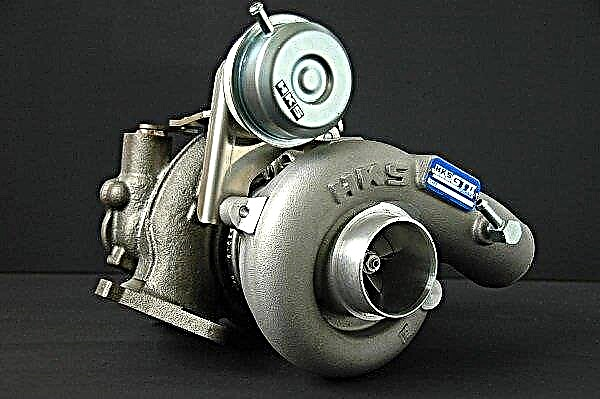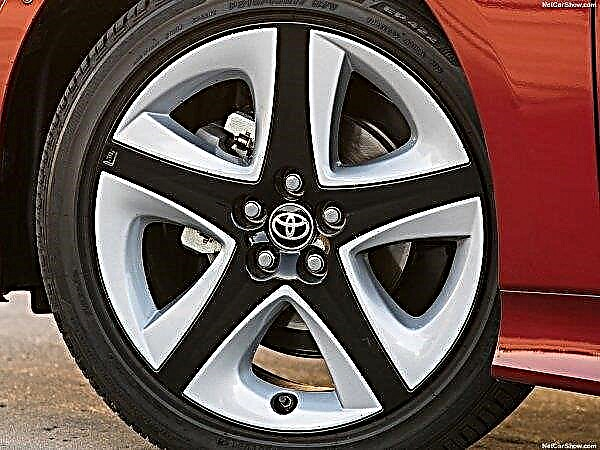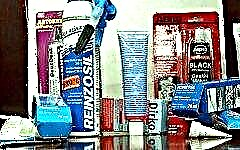

The content of the article:
- Sealant and glue - what's the difference
- Types of sealants
- Engine Sealants
- Car Exhaust Sealants
- Automotive glass and body sealants
Automotive sealants are represented on the modern market by hundreds of names and dozens of brands. Autochemistry can fully replace the gasket when repairing the chassis, valve cover, cylinder head, it is used when installing glass, repairing the body, etc.
In order not to make a mistake in choosing a sealant and not accidentally use an adhesive base for glass when repairing a cylinder head, it is necessary to clearly distinguish between sealants by purpose, composition and use.
Sealant and glue - what's the difference

In the manufacture of automotive sealants and auto glue, silicone, silicon compounds, and esters are used. The main difference between glue and sealant lies in the area of application.
Adhesives are used to permanently connect and fix parts in a certain position. After the glue dries, a strong, often hard layer forms. The main characteristics of high-quality auto glue are adhesion and cohesion.
Adhesion is the density of adhesion of the surfaces to be glued, cohesion is the density of the adhesive layer after drying. If the polymerization of the adhesive begins immediately after applying the composition to the surfaces to be glued and lasts up to 48 hours, the sealant starts hardening in 10-30 minutes, the polymerization period lasts up to 4 hours.
Types of sealants

The purpose of the sealants is to ensure the sealing of the joint between the connected parts of the units and assemblies. They are divided into subclasses according to the type of purpose:
- sealants-gaskets;
- clamps.
The hermetic composition is used instead of standard rubber and polymer parts or as an additional retainer when repairing engine units, cylinder head, muffler system, etc. The material forms the required shape of the gaskets and ensures the tightness of the connection.
Sealants-retainers are designed for hermetic connection of threaded inputs, exclude the option of self-loosening of bolts and nuts during the movement of the car in constant vibration mode.
When choosing an automotive sealant, you need to consider the scope of application. We offer the top 11 best formulations from trusted manufacturers "for all occasions."
Engine Sealants
The sealed base for the cylinder head and valve cover works at high temperatures - from 200 degrees, and is constantly exposed to aggressive environments. Sealants for the motor units are divided according to their composition:
- aerobic;
- solid;
- special.
For cylinder heads, the best are special formulations that work at critical temperatures and are resistant to oil. You cannot choose a sealant based on its color - this is a marketing ploy. What should be considered when using a gasket sealant?
Before use, the bonding surface must be cleaned, de-layered and degreased with white spirit. It is recommended to clean the surface with sandpaper.
The vulcanization of the composition takes an average of 2 hours. The exact time of vulcanization of a particular composition is determined by the manufacturer and indicated on the packaging. During this period, the engine must not be started even at idle speed. When sealing the lid, the composition is poured into the groove, the gasket is installed no earlier than 10 minutes later.
TOP 5 best motor sealants

Photo: DoneDeal sealant
- DoneDeal;
- Victor Reinz;
- ABRO;
- Permatex Ultra Gray;
- Dirko.
DoneDeal
DoneDeal heat-resistant sealant made in the USA is considered the best for work related to the installation of a gasket replacement on the valve cover, in the block head, for sealing transmission units, intake manifold, water pump, etc.
The operating temperature range of the composition is from -70 to +350 degrees. The sealant has minimal tack, suitable for motors with oxygen sensors.
DoneDeal does not lose performance for 3 years, is resistant to aggressive reagents: grease, antifreeze, water. Sealant may be applied to the installed gasket to provide a tighter seal and improve heat resistance.
Victor Reinz
High-temperature sealant Victor Reinz Reinzosil made in Germany has an average acidity, does not cause corrosion and metal oxidation. The maximum operating temperature is plus 310 degrees. In the composition there is no acetate polymerization - it practically does not smell.
The sealant has an average viscosity; it is recommended to use the Victor Reinz Reinzoplast brand to install the gearbox cover. "Renzosil" is used more often as a gasket former, it fills the nicks, caverns, cracks on the surfaces to be sealed as much as possible.
ABRO 11-AB
The engine sealant in the budget price category has good operating characteristics. Used to form gaskets on the engine block in the transmission system.
The maximum temperature of use is up to +340 degrees, the composition forms a strong connection that is resistant to deformation and shear. Among the shortcomings - a large, up to 50%, the number of fakes.
Permatex Ultra Gray
Permatex specializes in the production of sealants, which are included in the list of maintenance products for their models by the Renault and Nissan brands. In addition, Permatex trains have received OEM specifications from Mitsubishi, Toyota, Honda, Hyundai, Acura, Chrysler, Daewoo.
The sealant has high adhesion and is easy to apply through the tip to form an optimal gasket layer. The maximum polymerization time is 2 hours. After solidification, an elastic rubber layer is formed that is resistant to the aggressive effects of oil and transmission fluid. The product contains no acid, the operating temperature range is from -54 to +280 gr.
Dirko
The top of the best auto sealants for cylinder heads is completed by the Dirko HT brand from the Elring company. The sealant forms a durable, elastic gasket that is not subject to aggressive effects of oil, water, antifreeze, etc.
The tool has a large operating temperature range - from -50 to + 2460 degrees, at critical temperatures of 300 degrees it retains its characteristics for up to 2.5 hours.
The brand's lineup includes a separate agent for sealing the crankcase cover and oil pan - Spezial-Silikon. The sealant provides a strong joint that can withstand maximum vibrations and significant deformations during vehicle operation.
Car Exhaust Sealants
The exhaust system of the car systematically operates at critical temperatures. For example, gases after gasoline combustion heat up to 1300 gr. To seal holes, cracks in the system, when depressurizing the seams, do not use soft car adhesives, craftsmen use a special sealant with metal and ceramic fractions in the composition, which increase the resistance of the adhesive layer.
Exhaust sealants are divided into classes: pastes or cements, silicone bases. Silicone sealants retain elasticity, are used for assemblies that are subject to high vibrations, do not lose their properties with allowable displacement of the connected parts, maintaining the tightness of the connection.
Ceramic-based paste-sealants, after hardening, form a hard, fixed layer, are used to seal holes and cracks.
Top 3 best muffler sealants

- Liqui Moly;
- CRC Exhaust Repair Gum;
- Permatex Muffler.
Liqui Moly Auspuff-Reparatur-Paste
Ceramic sealant from the German manufacturer is developed for the repair of mufflers, spark plugs, brake pads. The composition retains its characteristics when heated to 800 degrees, prevents sticking of parts, is resistant to aggressive environments.Thanks to ceramic additives, it provides a strong, solid connection of parts, extends the life of the muffler.
CRC Exhaust Repair Gum
Synthetic sealant bridges cracks, prevents exhaust pipes from burning out. Works at temperatures up to 1100 degrees, hardens 10 minutes after application. The sealant is more commonly used to repair muffler and particulate filter on diesel vehicles.
Permatex Muffler
High temperature sealant designed for the repair of muffler systems, brake pads, catalysts, expansion tanks. After hardening, it does not shrink, retains its performance for up to 12 months. The maximum operating temperature is 1090 degrees.
A universal high-temperature sealant is used as a repair and installation tool and when installing an exhaust system, it provides high tightness of the connected parts.
Automotive glass and body sealants
The review of the best automotive sealants concludes with a series of compounds for windshield assembly and body repair. Sealants of this class are made from synthetic, polyurethane resins with the addition of additives that increase adhesion and ensure tightness of the joint.
When installing the windshield, two-component adhesive compositions are often used, the factory gaps on the body are restored with a soft sealant-gasket.
Top 3 best auto sealant for glass and bodywork

Photo: Chamaeleon sealant
- Liqui Moly;
- Terostat 9220;
- Chamaeleon.
Liqui Moly 8300
A polyurethane compound from a German manufacturer is produced in a convenient tube with a tapered tip, which allows you to adjust the width of the glue strip.
After drying, the sealant creates a strong top film, retains elasticity inside. Does not break during vibration, maintains performance for up to 24 months.
Liquimate 8300 is used for bonding windshields in body repairs. When pouring minor damages and body joints, it does not affect the paintwork, the sealant can be covered with auto enamel 20 minutes after the top layer has hardened.
Terostat 9220
One-part polymer sealant bonds the bodywork firmly to form a resilient, hard-edged gasket. Does not crack. Retains elasticity for up to 36 months. The composition is not affected by aggressive components: oil, gasoline, car enamel, resistant to ultraviolet radiation.
The sealant has the maximum adhesion rate and is suitable for joining smooth body surfaces. The composition does not use silicone and solvent. The sealant is not aggressive to rubber, it is used for gluing glasses.
Chamaeleon
Universal polyurethane sealant for body repair and glass bonding. Full polymerization takes place in 10 minutes; during repair, the surfaces to be glued do not need to be cleaned or degreased. After application, the adhesive strip does not spread, but given the rapid drying, repairs must be carried out quickly.











